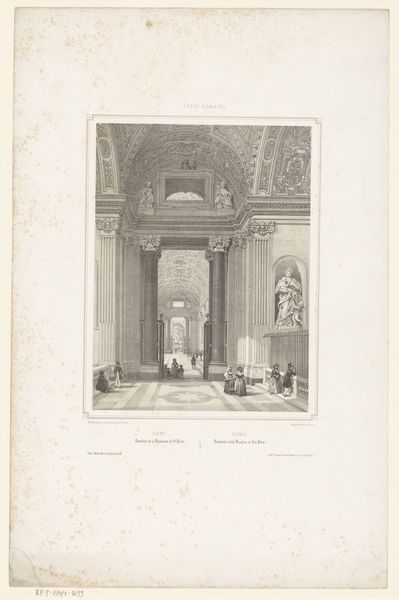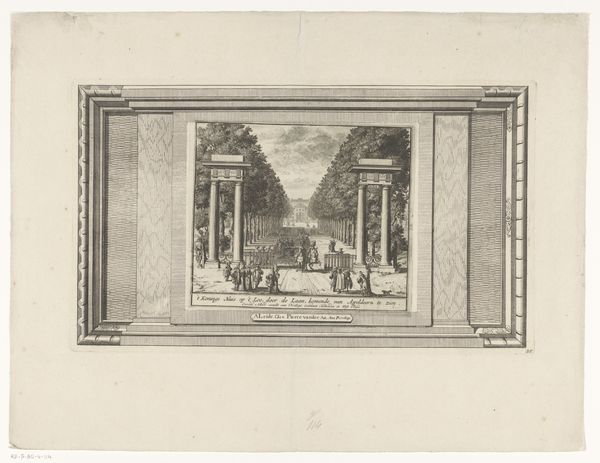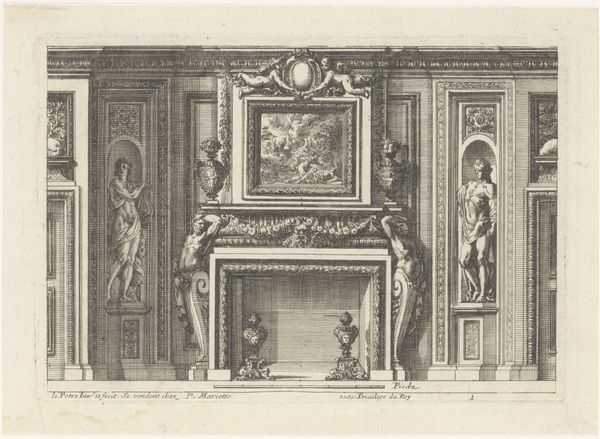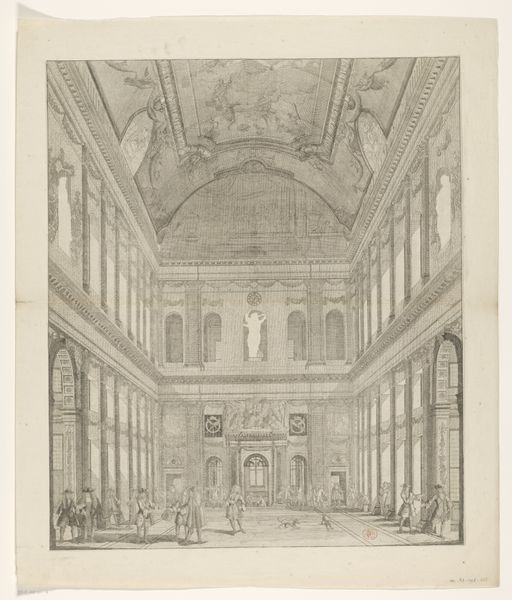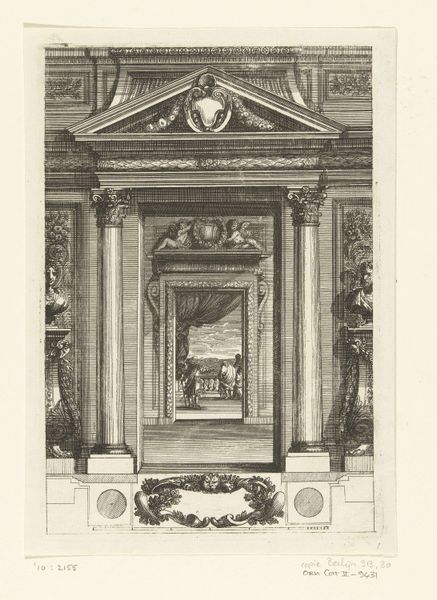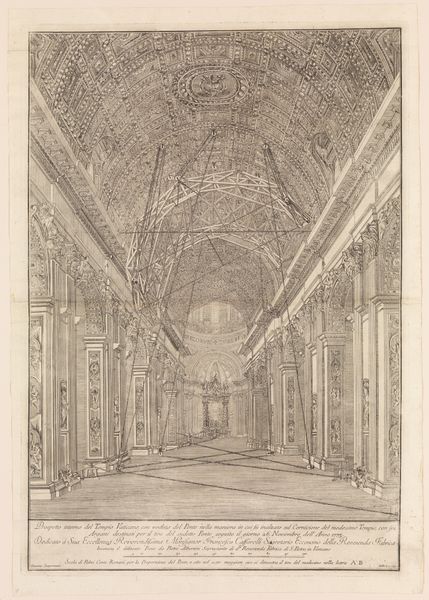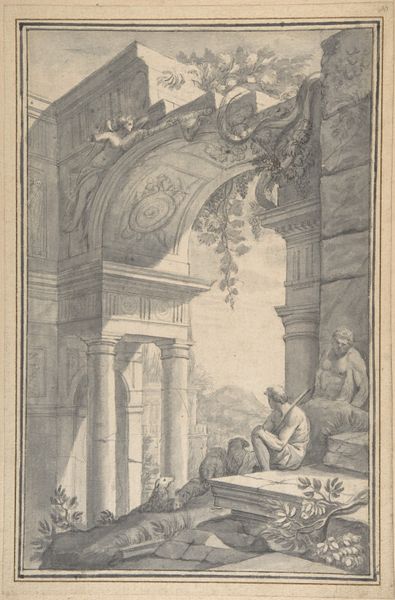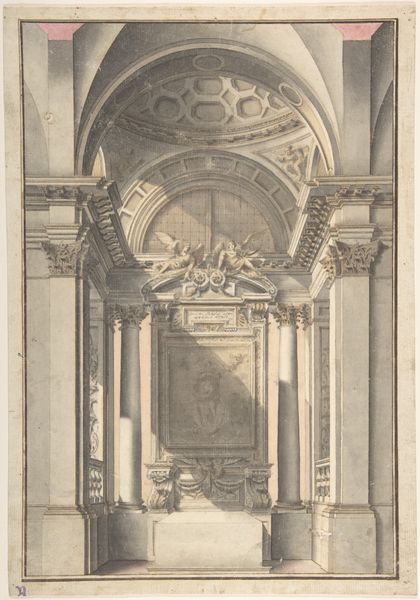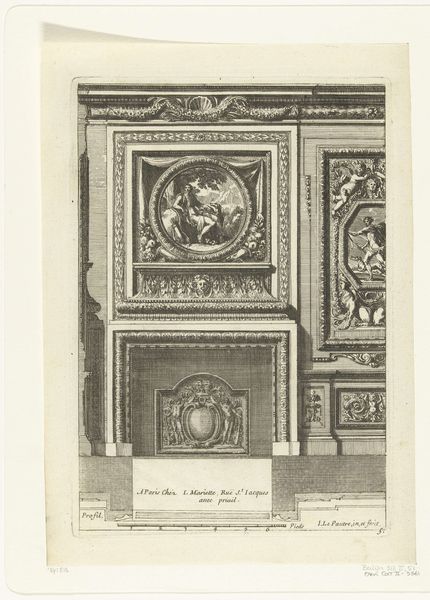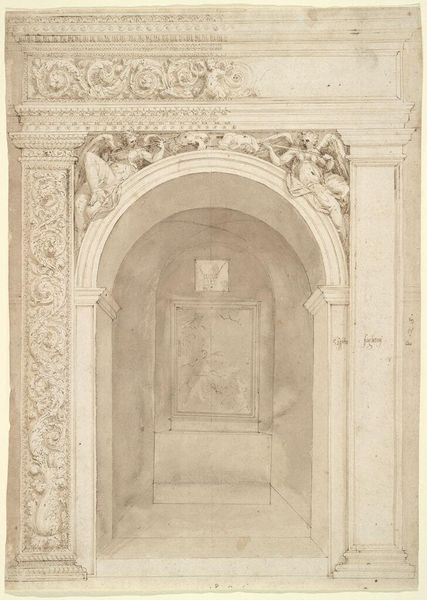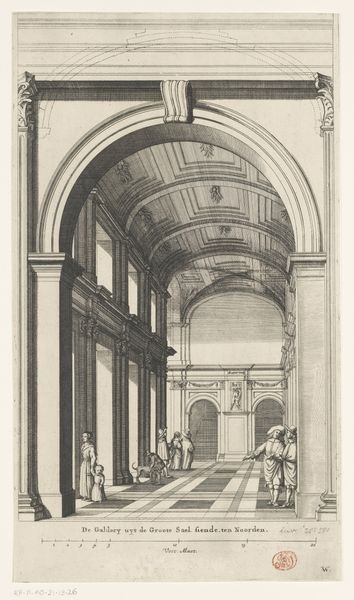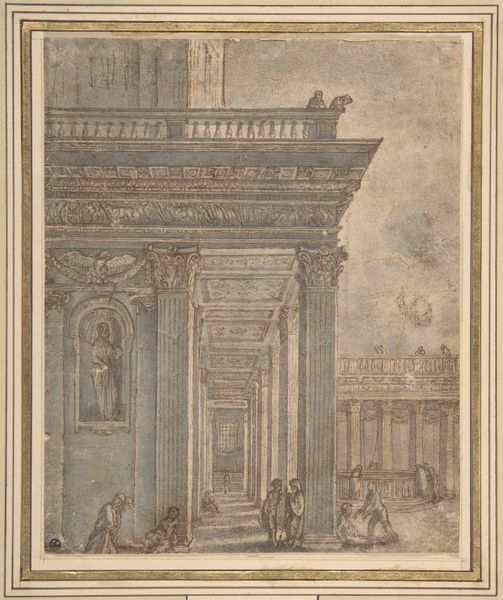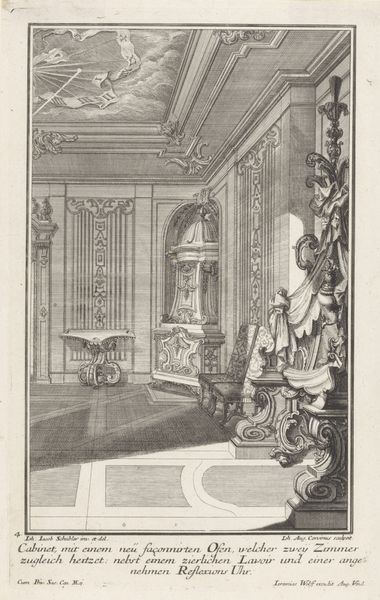
print, engraving, architecture
#
neoclacissism
# print
#
landscape
#
perspective
#
form
#
line
#
history-painting
#
engraving
#
architecture
Dimensions: height 567 mm, width 409 mm
Copyright: Rijks Museum: Open Domain
Curator: This engraving by Jacques François Blondel, dating from 1765, offers a 'View of the Testata di S. Pietro at Rome'. The imposing scale of the basilica's hall is immediately apparent. What strikes you first about it? Editor: The materiality. It looks like this was mass-produced. You see people milling about the base of the statues, a hint of this being more of a place of social interactions instead of something divine and set apart. It’s mundane despite the grandeur. Curator: Indeed, Blondel masterfully employs line and perspective to convey depth and grandeur. Note how the orthogonal lines of the checkered floor converge towards a vanishing point, emphasizing the immensity of the space, and how the dark lines help to define form and volume. The architecture itself speaks to Neoclassical ideals. Editor: But the figures are also clearly meant to show the labor. There's nothing especially holy about them or their actions. And engraving itself is labor intensive work—metal plates, ink, paper. The choice of the engraving medium democratizes the high ideals presented, which means access for the wider public and also a loss of fidelity and detail. Curator: Interesting point. The formal clarity typical of Neoclassicism and its historical-painting style provides an underlying sense of order. Semiotically, each component contributes to the overriding sentiment: from the linear details to the historical scene. Editor: It seems that the history-painting genre flattens complex spaces and the hierarchies within the religious orders to commodities. One receives art. Curator: I wouldn't entirely agree. This print provides us a compelling look at an idealized form through strict geometry, its careful organization evoking reason and classical virtues, so you’ll leave contemplating form over function. Editor: I'll leave with an enhanced interest in labor and consumption, thinking more broadly about how these scenes, despite their noble efforts at depicting scale and grandeur, bring even religious artwork closer to a commercialized everyday life.
Comments
No comments
Be the first to comment and join the conversation on the ultimate creative platform.

